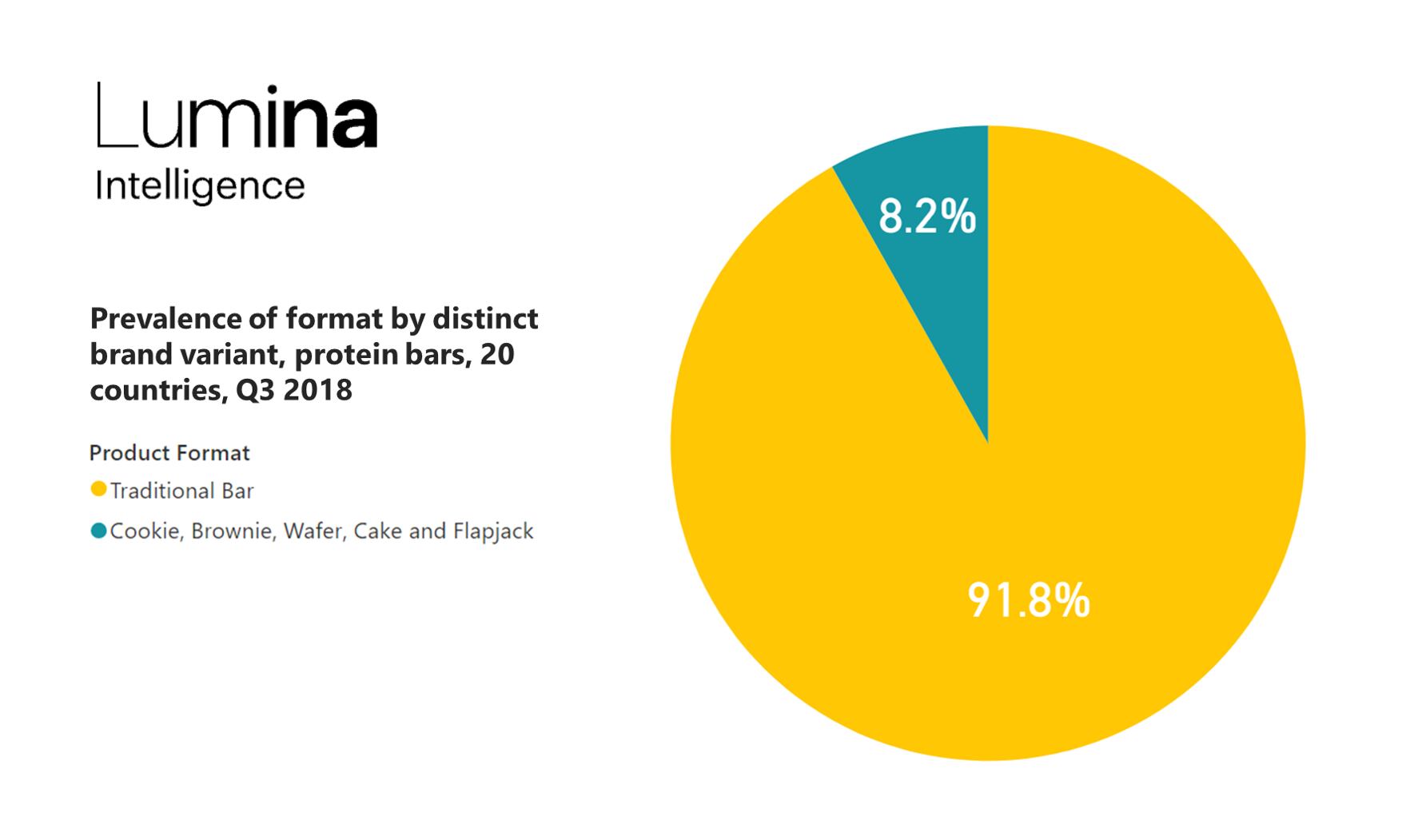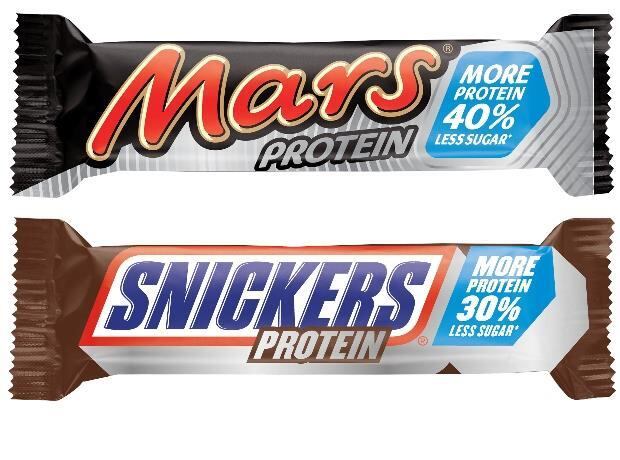A growing number of protein-rich ‘treats’ are making their way onto retail shelves.
In the ice cream category, Halo Top boasts a higher protein content than most, with fewer calories. The brand’s vanilla bean ice cream, for example, contains 5 g of protein (compared to Dreyer’s Slow Churned Vanilla Bean’s 3 g) with 30 fewer calories, 1% less fat, and 7 g less sugar.
Dutch start-up Koupe is another low-calorie ice cream with higher protein claims than many others in the sector. The brand lists milk (rather than cream), whey protein, and a prebiotic fibre polydextrose among its ingredients.
And in the chocolate category, cocoa+ is selling ‘protein chocolate’ made of 19 g of whey protein isolate. The product contains essential branched-chain amino acids (BCAAs), which the company claims are “the building blocks for increasing strength, maintaining lean muscle mass and reducing muscle fat”.
So does that make these ‘treat’ alternatives healthy? Does adding protein and reducing calories move doughnuts, ice cream and chocolate into the ‘health food’ category?
A healthy alternative?
Start-up Jim Buddy’s has developed a high protein doughnut for UK consumers. According to director Tom Neal, his offering allows you to “have your doughnut and eat it too”.
Jim Buddy’s was developed to fill what was, according to Neal and his gym-going friends, an obvious gap in the market. Neal was aware of healthier alternatives to cookies and muesli bars on the market, but “noticed these ‘healthy alternative’ bars were often trade-offs between healthy ingredients, and the taste/texture/experience you actually want”.

Focusing on his “number one favourite food”, Neal created a doughnut using specific ingredients for bodybuilders, which included the functional element of protein “without the sandy aftertaste”.
Neal said his creation offers consumers the taste of a doughnut with the nutrition of a competitive health bar. “This is the experience of a doughnut without the expected sugar, fat, calories and guilt. People are genuinely astonished when they try one of these things and marry the taste up with the nutrition label.”
As a personal trainer, Neal told us he dislikes the categorisation of certain foods as ‘healthy’ or ‘unhealthy’. However, assessing the macros and ingredients of Jim Buddy’s high protein doughnut confirms, according to Neal, that his product is ‘healthy’.
“They are low calorie – less than half that of a 'regular' doughnut,” he told us. Further, the soy-free product is low in sugar, he continued.
“Ingredients wise, read the label and you'll have heard of the foods they are made from and be able to draw comparison with lots of well-known health products. I'm very proud to call Jim Buddy's a health food brand.”
Protein ‘treat’ alternatives are gaining traction in the sports nutrition space. According to research from Lumina Intelligence, 8.2% of the protein bar market is now made up of cookies, brownies, wafers, cakes and flapjacks.

“Consumers these days are looking to have their cake and eat it too – they want to indulge at the same time as treating their bodies, evident from how birthday cake is now fan-favourite flavour in protein bars,” Lumina sports nutrition analyst Tom Morgan told FoodNavigator.
“As the line between health foods, general sports nutrition and convenience food becomes even more blurred, we’re expecting the dessert trolley to become a key influencer in future innovation.”
Expanding consumer choice
By providing a healthy option to a food category that didn’t previously have one, Jim Buddy’s high protein doughnuts are helping to improve public health, Neal told this publication.
“Fighting problems in society today, such as obesity and type 2 diabetes, will be done on the ‘frontline’ – at checkouts. The battles will be won with a) the existence of alternative/healthier options and b) through education.
“I have always believed it is possible to have a healthy lifestyle without depriving yourself. It is about balance and Jim Buddy’s provides this in a delicious doughnut!”

For Mars Wrigley, manufacturer of the well-known chocolate bars Mars and Snickers, creating protein-rich treats is also about offering consumers more choice.
“Consumers are continuously looking for products that match their increasingly busy lifestyles so our approach is to offer a range of treats that suit their preferences,” a Mars Wrigley spokesperson told FoodNavigator.
The company’s first protein bars entered the UK market in 2016, and earlier this year, Mars Wrigley launched new Mars More Protein and Snickers More Protein bars to a wider audience. Both bars contain a protein blend, milk protein isolate, milk protein, and whey protein concentrate.
“These products are still a treat – they offer consumers more choice so they can enjoy the great taste of Mars and Snickers with added protein and less sugar than a standard bar,” the spokesperson continued.
“At under 200kcal and with 10g of added protein, the Mars More Protein bar contains 40% less sugar, while Snickers More Protein bar has 30% less sugar than the standard bar.”
Nutritionists ‘whey’ in
Turning to the nutrition scientists, FoodNavigator asked the British Nutrition Foundation (BNF) for their view of this new, protein-rich ‘treat’ category.
While the BNF was unable to legally support specific products, a spokesperson told us that when looking at the health properties of food and drink, it is the nutritional profile overall that is key.
“Products that are high in fat, saturates and sugar are still foods that are not needed as part of a healthy diet and so, if they're included, should be consumed in small portions and not too frequently, even if other ingredients like protein are added,” we were told.
According to the BNF, protein is not a nutrient the UK population is lacking. In fact, on average, “our protein intakes are more than sufficient”.
The spokesperson continued: “If trying to increase protein intakes, the healthiest way to do so would be to go for foods like beans, lentils, fish, eggs and lean meats.”
From a sugar perspective, campaign group Action on Sugar said that Jim Buddy’s doughnuts are lower in sugar than their conventional counterparts. Instead, they contain sucralose and erythritol, a spokesperson told FoodNavigator. “Our advice is they should still be consumed as treats, only occasionally”.
According to Jim Buddy’s Neal, however, the start-up has received ‘amazingly positive’ reactions to his product from those in the health game. “I'm very anal when it comes to nutrition and seeing the doughnuts receive the praise they have from people in the fitness industry has been awesome.
“They like the taste sure, but they approve of the makeup of them and my refusal to cut corners in the development process for shelf life/colouring etc. that I didn't want to go near.”



